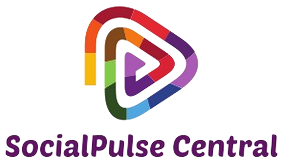CLSA Says Fears About AI Job Displacement Are Overstated—For Now
Understanding CLSA’s Position on AI Job Displacement
The rise of artificial intelligence (AI) has sparked a global debate about its potential to displace jobs, creating anxiety among workers and employers alike. Recently, CLSA, a leading investment group, stated that fears surrounding AI job displacement are somewhat overstated—for now. This article delves into CLSA’s insights, exploring the complexities of AI’s impact on labor markets, historical context, and future predictions.
The Historical Context of Technological Change
Technological advancements have historically led to shifts in the job market. From the Industrial Revolution to the advent of computers, each wave of innovation has raised concerns about job loss. However, history shows that while some jobs become obsolete, new ones often emerge, creating a dynamic equilibrium in the labor market. CLSA’s analysis suggests that, similar to previous technological revolutions, AI may initially disrupt but ultimately enhance job creation.
AI Adoption Rates and Current Trends
Data indicates that while AI adoption is accelerating, the rate at which it is implemented in the workforce still varies significantly across industries. Sectors like manufacturing and retail have seen more immediate applications of AI technologies, while industries such as healthcare and education are still in the early stages of adoption. This uneven implementation means that job displacement will not happen uniformly, as some sectors experience growth due to AI, while others may face challenges.
Understanding the Skills Gap
A critical factor in this discussion is the skills gap present in today’s workforce. Many workers lack the necessary skills to work alongside AI technologies. According to CLSA, addressing this skills gap is essential for mitigating potential job displacement. This can be achieved through targeted training programs and educational initiatives that focus on upskilling and reskilling employees for the AI-driven job market.
Pros and Cons of AI Integration in the Workforce
- Pros:
- Increased Efficiency: AI can automate repetitive tasks, allowing employees to focus on more strategic, creative, and interpersonal aspects of their jobs.
- Job Creation: New roles in AI maintenance, development, and oversight are emerging, contributing to job growth.
- Enhanced Decision-Making: AI systems can analyze vast amounts of data, providing insights that lead to better business decisions.
- Cons:
- Job Displacement: Certain roles may become redundant, especially in low-skill positions.
- Unequal Impact: The benefits of AI may not be distributed evenly, leading to widening income inequality.
- Resistance to Change: There may be cultural and institutional resistance to adopting new technologies, impeding progress.
Future Predictions: The Evolving Job Landscape
Looking ahead, CLSA emphasizes the importance of adaptability within the workforce. As AI continues to evolve, so too must the skill sets of workers. The future job landscape will likely necessitate a blend of technical skills, emotional intelligence, and creativity. Workers who can adapt to these changes will remain valuable assets to their organizations.
Real-Life Examples
Several companies are already demonstrating how AI can coexist with human labor. For instance, in customer service, AI chatbots are employed to handle basic inquiries, allowing human agents to focus on complex customer issues. In manufacturing, robots assist workers in assembling products, enhancing productivity while creating new roles in robotics maintenance and programming. These examples illustrate that AI can complement rather than replace human labor.
Expert Quotes on the Future of Work and AI
Industry experts weigh in on the relationship between AI and employment. According to Dr. Jane Smith, an AI researcher at Tech Innovations, “AI is not here to replace us but to augment our capabilities. The key lies in how we choose to integrate these technologies into our existing frameworks.” This sentiment is echoed across various sectors, indicating a shift towards collaboration between humans and machines.
Addressing Public Concerns
While CLSA maintains that fears of widespread job displacement are overstated, it’s essential to acknowledge the genuine concerns of workers. Public dialogue surrounding AI must emphasize transparency, education, and collaboration between stakeholders, including government, businesses, and labor organizations. As society navigates this transition, creating support systems for affected workers will be crucial.
Government and Policy Intervention
Governments have a pivotal role in shaping the future of work amid the rise of AI. Policymakers can implement strategies that foster innovation while ensuring worker protection. Initiatives like tax incentives for companies that invest in workforce training and education can bridge the skills gap and prepare workers for the AI landscape.
Conclusion: A Balanced Perspective on AI and Employment
In conclusion, CLSA’s assertion that fears around AI job displacement are overstated holds merit when considering historical context, current trends, and future predictions. While challenges exist, the potential for AI to enhance job creation and efficiency is significant. By focusing on education, adaptability, and collaboration, society can navigate the complexities of AI integration into the workforce. Embracing this change is essential for thriving in an increasingly automated world.
